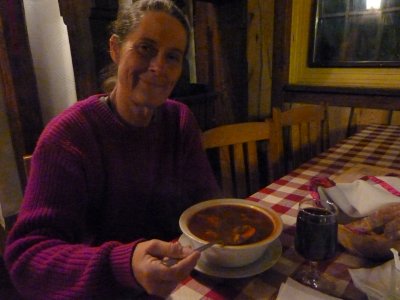
But this isn't breakfast. This is Hungarian Goulash which filled us up at dinner time.
Paprika was provided as a condiment.
We tried to order another course but it was politely suggested that we may wait and see how full we were after the soup.
Answer ..... full!
The glass of wine was a pleasant extra.
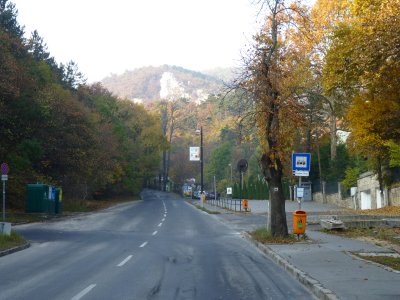
The first bus tickets were provided by the campground. We also inherited the last day of two 72 hour all transport passes from a couple of Kiwis who were leaving the camp site. After that we were on our own!
The buses have small orange boxes with a slot to insert the tickets. A stationary electric version of the ones conductors used to use to punch a hole in tickets.
We watched carefully but we were as successful at seeing Budapestians stamp their bus tickets as we've been photographing wildlife since Mongolia.
Zugligeti camping is about 100m from the end of the 291 bus route.
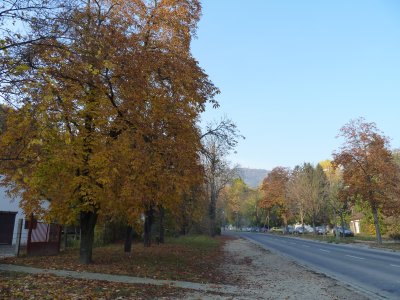
We decided against a game of conkers while waiting. And also forgot about collecting them for roasting later.
Just something from my youth!
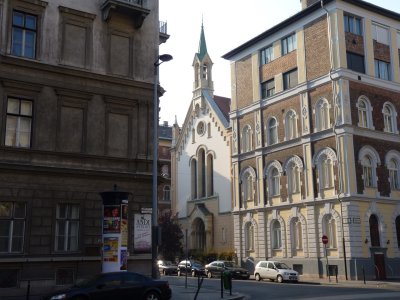
Buda is one (hilly) side of the Danube, Pest is the other (flat) side. One of those mildly fascinating but completely useless statistics we've gathered is that we crossed the main bridge between Buda and Pest seven times during our stay. Four times by truck, twice by bus, and once on foot!
We set forth on our self-guided walking tour of Budapest. At least that's what it would have been called if we'd paid someone to provide the guide ..... ! We really aren't good tourists.
Heading towards the river we hunted down the source of ringing bells.
Not exactly a campanologists dream, there were just two bells, but pleasant nevertheless. It was Sunday and people were attending this small church..
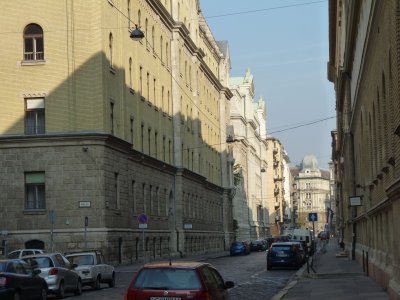
Which suited us.
We are sure there's a river round here somewhere!
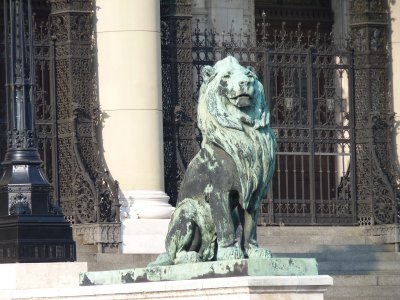
We aren't sure what they would actually do if the building really needed protecting, but there were a couple of people with uniforms and guns that probably had a better idea.
We were a little intrigued though that both China and Hungary (and no doubt a few other countries) had statues of lions when neither country supported wild lions in the first place.
Something to do with the importance of symbols in political control I guess.
There isn't the same imagery in which is female or male in Hungary as in China. Much more literal.

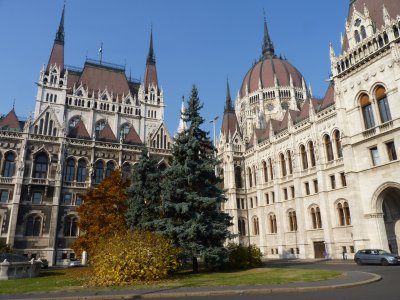
The strategically placed trees hid a ventilation duct that I initially mistook for a well.
Images of tunnels for polies and clerks to move anonymously from the main building to any one of the other imposing looking offices around.
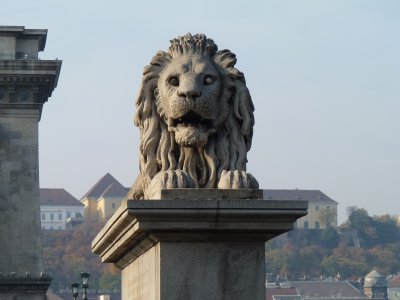
We walked across. The lion ignored us.
Unlike the many dogs we've noticed guarding houses and other premises like our spring repairer's.
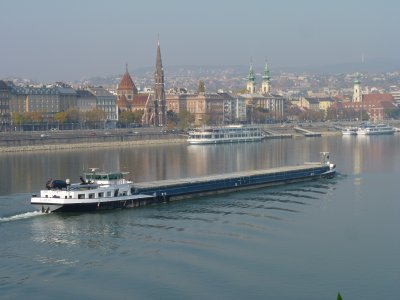
Parked on the stern of the barge is a small car.
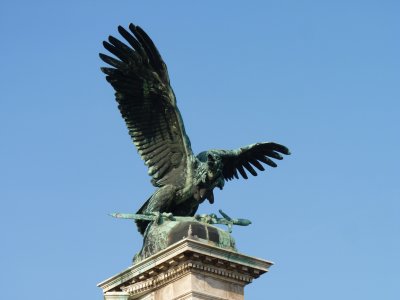
Its quite possibly a turul. A totemic bird, recently abused as a symbol by the political right.
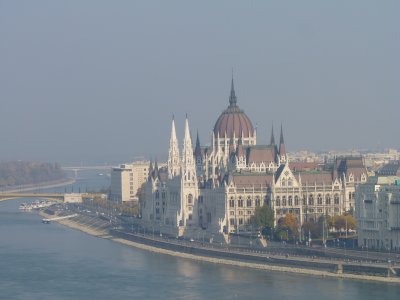
There's a haze in the air. Presumably from open fires.
The bridge we so enjoyed crossing is the yellow one not far the other side of the parliament buildings.
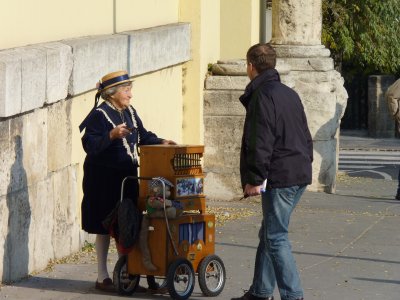
There's a few souvenir shops, touts, craft shops, restaurants, and all that stuff.
Plus this wonderful, dressed for the occasion, lady with the barrel organ.
On a modern pram chassis with pneumatic wheels. Complete with stuffed monkey!
They do make a nice sound though.
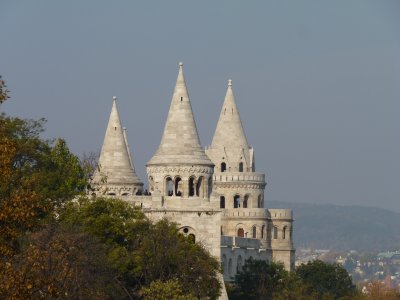
Haven't a clue why its referred to as "neo-gothic".
The connection with fishermen was that their guild was responsible for defending this bit of the wall in the middle ages.
There are nine turrets representing the nine Magyar tribes that came to the Carpathian Basin in the 9th century.
The Hungarian language doesn't belong to the Indo-European language group. The origin of the Magyars is probably Asiatic.
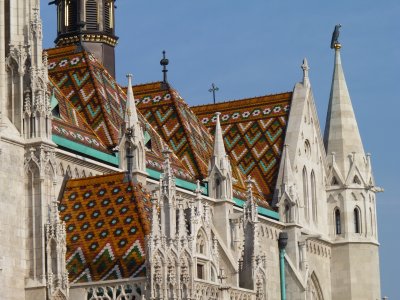
The mosaic roof was striking, to say the least.
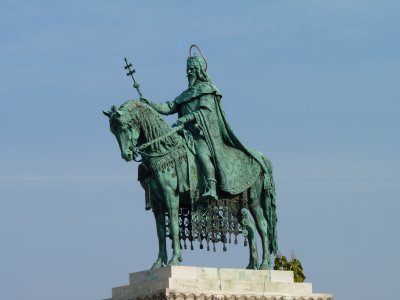
Not sure who he was going to smote with the cross though.
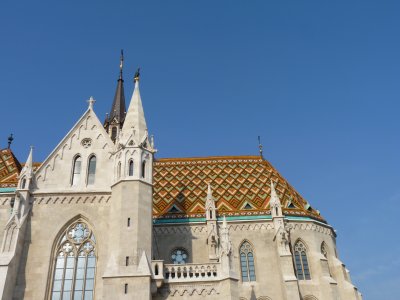
We examined it carefully but couldn't find any mistakes.
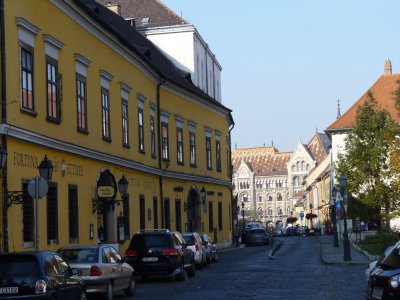
It belongs to the national archives building.
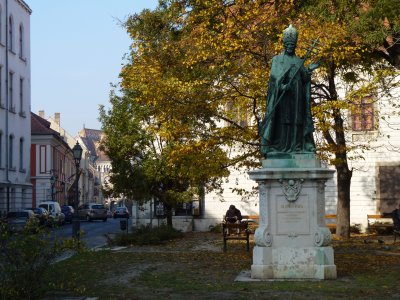
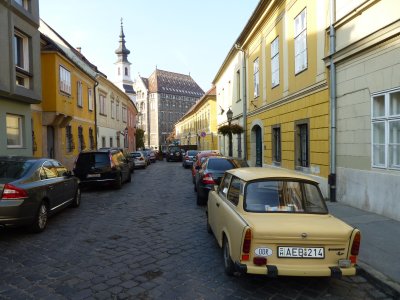
And front right another sort of archive.
Straight from the DDR. A Trabant. The East German equivalent of the earlier volkswagen. Basic personal transport for the masses.
Apparently somewhat underpowered and slow, as well as poorly streamlined and a trifle uncomfortable. A source of humour and frustration for the reputedly otherwise humourless West Germans in their Mercs, Beamers and Audis.
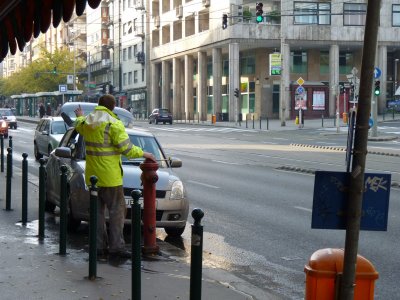
This is the mundane but important task of testing the fire hydrants.
All done with appropriate care for passing pedestrians.
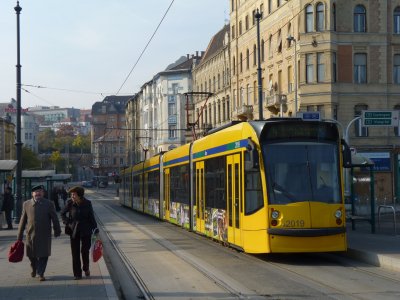
There are six cars in this set. Each car has a single central bogey. They are joined by nicely articulated couplings that keep them all level and lined up while allowing them to go round corners and over hill tops.
Someone somewhere did some clever engineering.
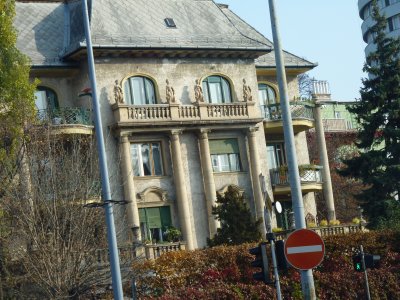
The longest by far that we have stayed in one place in 6 months.
Having got used to the place we seemed a bit reluctant to set off again.
There are some magnificent old houses in the Buda hills.
As we left we had a short but amusing encounter with a party of seven traveling clowns (www.flyingseagull.co.uk) who had arrived late the previous night in a converted horse float - the tailgate swung down to make the stage.
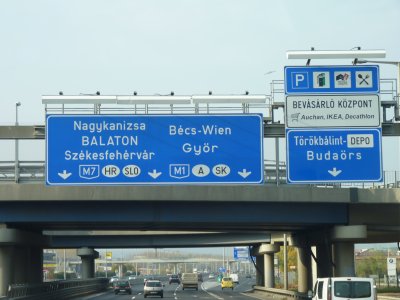
A couple of clues as to how relatively small Europe is compared to Australia and where we've traveled.
There are signs to four of the neighbouring countries.
From right to left ... Slovakia, Austria, Slovenia, and rather strangely, Croatia. Bosnia-Herzegovina would have been BiH but doesn't share a border with Hungary..
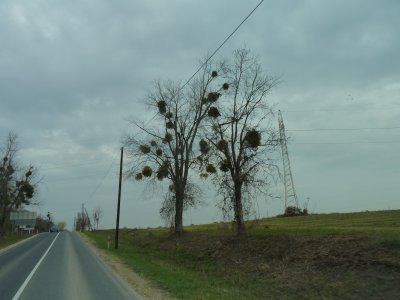
Leaving the misteltoe.

A bit north west of the westerly end of Lake Balaton.
Off the beaten track. Looks like a few hikers find their way here after walking along the hills of the national park on the northern side of the lake.
And passing people like ourselves.
Really another oasis for us.
A few hundred meters away is the shop with fresh bread and a few other essentials, like chocolate and lumps of bacon. We've never understood why its mostly sliced in UK, Aus and NZ. We like lumps!
Unfortunately nearby restaurants are closed for winter.
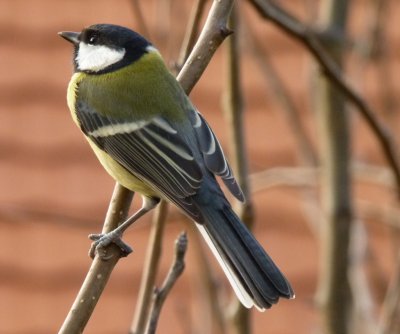
This wee fellow sat still outside the truck window for at least 10 minutes.
As if posing for us.
We are now about 80km from the Slovenian border. Looks like we will pass through Hungary all too quickly. Heading towards Spain (maybe Portugal). Not only because it will be hopefully warmer but also hopefully "open".
We used to laugh at Aus and NZ being closed on Sundays. It seems this part of Europe is closed in Winter.